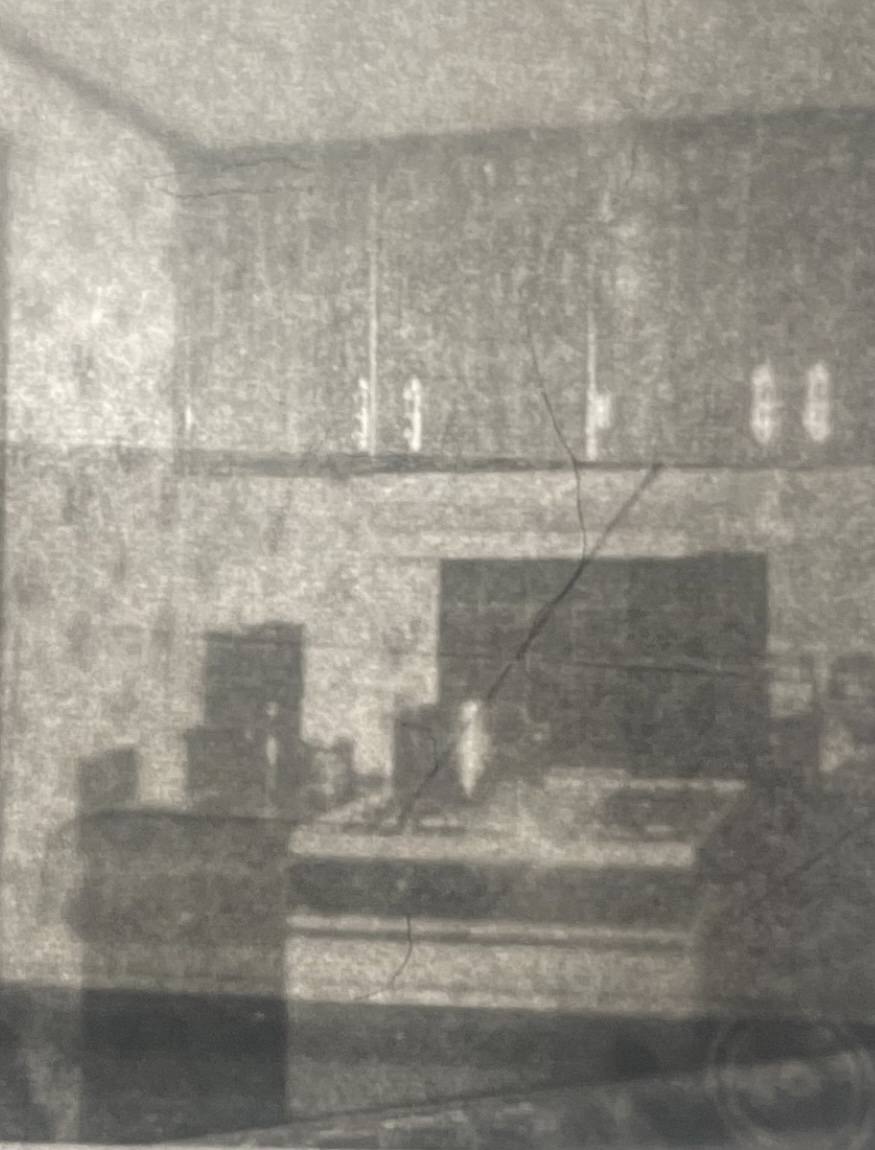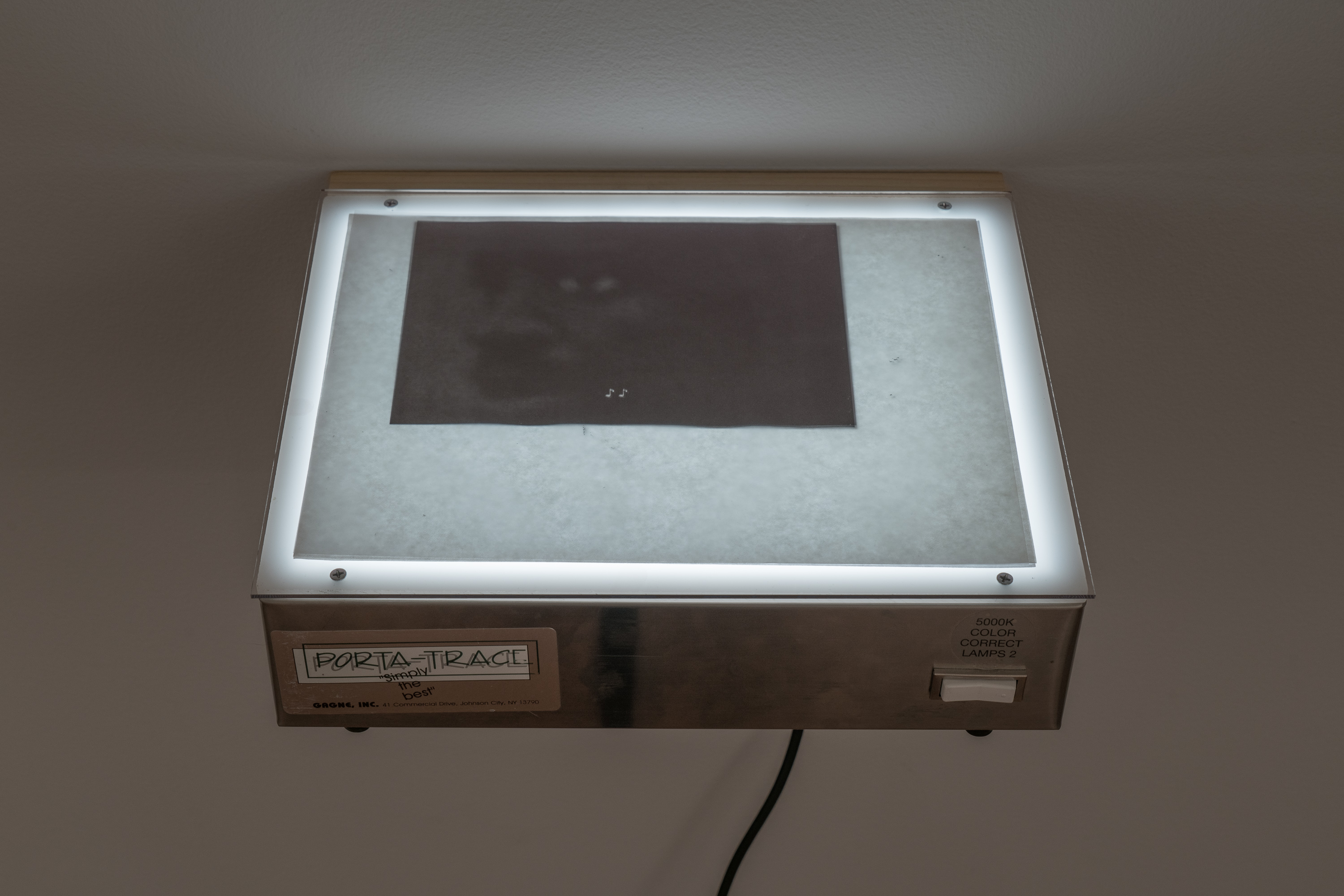Eli Greene
Paper Blinds
February 17 - April 6
Paper Blinds
February 17 - April 6

Eli Greene’s work carries two realities, as if it is trying to both be alive and exist; it finds its place in between. To experience her work is to experience loss and reemergence equally. Like a ghost, they hold present that which was lost through a new form. Components that comprise an enlarged film still are printed and joined together by tape, remaking itself as a single picture to hang on a wall. It is then broken into parts again, each of which is photocopied and joined again, retaining evidence of its past configurations so near to our current perception that it appears as if it was; a reproduction as a mirage of its own recency. With that particular moment of becoming stopped, its remnants are released to become something else. The original components are then re-isolated, maintaining the real tape and marks that haunt the new copy version, allowing these remains to feed something they never could have before. As long as it’s still alive, the original cannot succumb to forces of decomposition and renewal.
In Paper Blinds, more copies find new existences through a less fixed commingling. Protruding from various spots along the gallery walls, small light boxes made to make tracings from letter-paper sized images become resting places for more printed stills, drawings, and other objects. Layered at times, they are committed to these arrangements by placement and the weight of the glass that presses them into each other and into the light. Made to produce another kind of ghost (tracings), Greene gives these light boxes new purpose that never loses connection with their origin. Tracing becomes an element of reconstitution in another work featuring a tracing of a tattoo of the artists’ mother’s name. The small, horizontal drawing is matted and wedged behind glass, both the mat and glass serving to elongate the presence of this gesture by several feet of emptiness. This offering of empty space provided by unnecessarily large expanses of mat board and glass extends to two printed close-ups of Thelonious Monk’s right eye taken from the archival documentary by Alain Gomis, Rewind & Play (2023). In one his eye is open and searching with intensity, maybe even desperation. In the other his eye is closed, a seeming escape that in Greene’s execution becomes permanent.
The pain of loss is processed and activated in Greene’s work, but never done away with. She does not move on, nor does she completely give in. Her work is a recognition that this duality of distinct experiences actually produces a continuum, approximating a truer sense of what loss does and what can be done with it.

light box 6, 2024, light box, glass, photocopies on vellum and paper, 12 1/4 x 10 1/2 x 3 1/4 inches